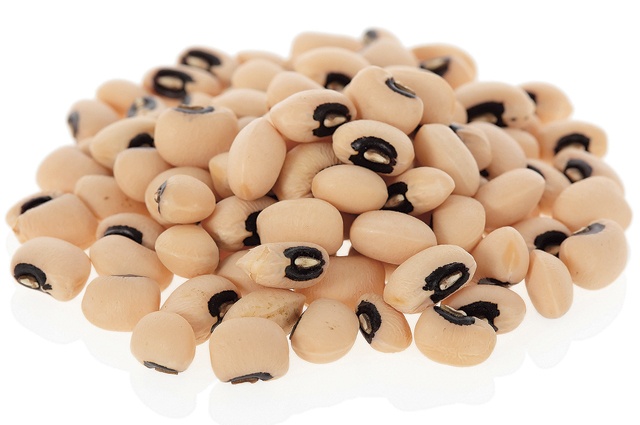If you’re superstitious or Texan (or Southern), the odds are good that black-eyed peas serve as part of your New Year’s Day menu every year. If you possess both traits, it’s a given that you are among the true believers who eat black-eyed peas on January 1, because doing so is supposed to bring good luck and prosperity the rest of the year.
Popular U.S. folk wisdom holds that the tradition started during the Civil War when Union troops burned Confederate farm fields but considered cowpeas, as they were called, to be livestock feed and left them alone. People in the war-torn South might have starved without the black-eyed peas to sustain them. Ever since, they have been part of the New Year’s Day meal for Southern folks as a symbol of gratitude and hope for a happier new year.
Depending on how you feel about black-eyed peas, we have primarily two people to either thank or blame for the popularity they enjoy in Texas and beyond. One is J.B. Henry, an Athens businessman who first decided to grow black-eyed peas on a commercial scale around 1909. In trying to figure out a way to combat the weevils that bedeviled his plants, he dried them in an oven on East Tyler Street in Athens and found that dried peas were easier to ship, which transformed the black-eyed pea into a viable agricultural product.
Athens was soon billed as the Black-Eyed Pea Capital of the World and functioned as such for several decades; peas were grown there, canned there and shipped from there. Even after the commercial production of black-eyed peas in the area declined, the city paid homage to their historical importance with a Black-Eyed Pea Jamboree.
Elmore “Tiger” Torn, the father of actor Rip Torn and founder of the International Black-Eyed Pea Appreciation Society, entered the black-eyed pea picture some time after World War II. He was what was then called a chemurgist, or one who researched industrial applications for organic, raw materials, especially farm products; today he would be called a biochemical engineer. His work took him all over the world, and he said he discovered that serving one kind of black-eyed lentil or another was a good-luck tradition in India and also in Egypt and France. The Babylonian Talmud, written in about the year 500, also instructs Hebrews to eat certain foods for good luck, including the black-eyed pea.
“One explanation is that these lentils are great soil builders,” he theorized. “Ask any farmer. You plant black-eyed for a few years, and they restore soil worn out, for instance, by long cotton cultivation. So this business of the legume restoring the soil may have something to do with the superstition that the black-eyes bring good luck for all the year.”
This wasn’t exactly a new idea. Another chemurgist, George Washington Carver, touted the black-eyed pea (along with peanuts and sweet potatoes) not only for their soil-amending qualities, but also for their nutritional wallop. The peas are a good source of protein and provide beneficial amounts of calcium, folate, iron, potassium and fiber.
It’s been suggested that Tiger Torn created the American “tradition” as a paid public relations man for the Henderson County Chamber of Commerce, suggesting that he had an ulterior motive for his enthusiasm for black-eyed peas. At any rate, Torn was for many years the black-eyed pea’s biggest booster and ambassador. He even attempted (unsuccessfully) to expand the black-eyed pea into Vietnam in the 1960s, during the height of the war as part of an agricultural project, and also offered to supply U.S. troops with black-eyed peas for their New Year’s Day meals. (The Army politely declined because, as U.S. Gen. William Westmoreland said, there was no significant troop demand for that particular food.)
Today, Torn’s Black-Eyed Pea Association and the Black-Eyed Pea Jamboree in Athens are gone but not forgotten. A black-eyed pea cook-off is part of the annual Fall Festival at the East Texas Arboretum & Botanical Society, which has revealed the black-eyed pea’s versatility in ways that might have perplexed even J.B. Henry and Tiger Torn. There have been black-eyed pea enchiladas, cowpea quiche, and black-eyed pea cheesecake along with Jell-O and adult beverages such as a “peatini” and black-eyed pea wine. A marinated version of the peas is called Texas Caviar.
That kind of culinary creativity on the part of people doesn’t leave a lot of black-eyed peas for the cows and hogs, not that they get black-eyed peas anymore, but it makes for a fine tradition. It really doesn’t matter if the tradition is 60 years old or a thousand, as long as it’s tasty.
——————–
Clay Coppedge is a regular contributor to Footnotes in Texas History. His book, Hill Country Chronicles, recently was published by The History Press.


